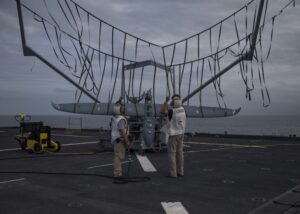
The Navy on Nov. 5 announced its intention to issue a sole source contract to Textron [TXT] to extend Unmanned Aircraft System (UAS) Intelligence, Surveillance and Reconnaissance (ISR) services aboard an expeditionary sea base (ESB) for at least another year. Naval Air Systems Command (NAVAIR) specifically said the Program Executive office for Unmanned Aviation and Strike Weapons (PEO U&W) intends to issue a firm-fixed-price contract with Textron to extend UAS ISR services aboard the USS Hershel “Woody” Williams (ESB-4) for…

 By
By 











